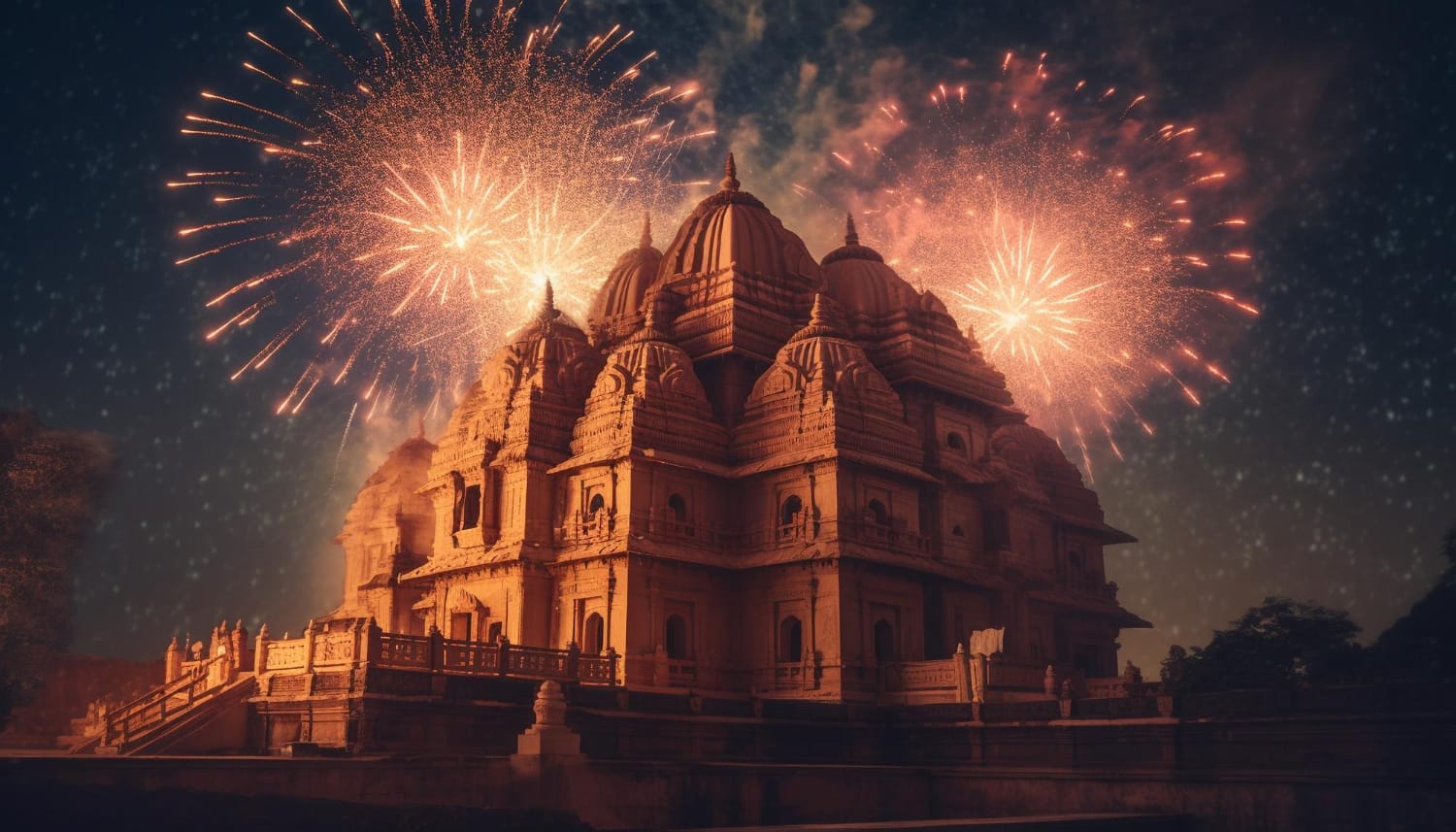Explore the sacred city of Ayodhya, where myth and history intertwine to create a tapestry of spirituality and heritage. From the revered temples dedicated to Lord Ram and other deities to the serene banks of the Saryu River, Ayodhya beckons pilgrims and history enthusiasts alike. Delve into its rich cultural heritage at sites like Tulsi Smarak Bhawan and Kaleram-ka-Mandir, each steeped in legends and timeless devotion. Whether seeking divine blessings or delving into ancient tales, Ayodhya offers a journey through time and faith unlike any other.
Hanumangarhi
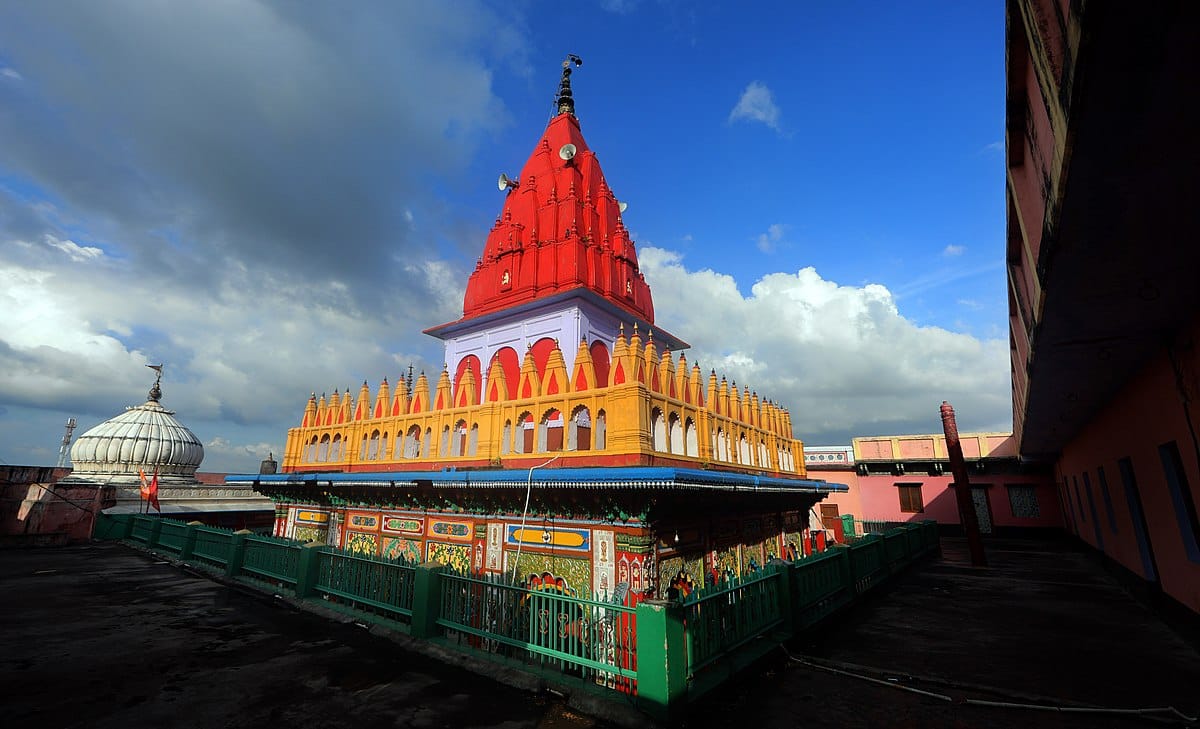
Nestled within the heart of the bustling pilgrim town, the ancient temple of the 10th century stands as a formidable bastion of faith and history. Constructed resembling a fort, its majestic facade is accessed by a flight of seventy-six steps, each step echoing centuries of devotion. Circular fortifications guard its corners, echoing tales of bygone battles and steadfast guardianship. Legend whispers that within its sacred confines, Lord Hanuman once found solace in a hidden cave, ever watchful over the town's fortunes. At its sanctum, a resplendent golden idol of Lord Hanuman reigns supreme, drawing pilgrims from afar to pay homage. Amongst the holiest sites, Hanumangarhi is revered as a sanctuary where thousands flock daily, beseeching the divine for protection from malevolence and blessings of joyous abundance. Within these ancient walls, echoes of prayers past and present mingle, creating an ethereal tapestry of devotion that transcends time.
Ramkot
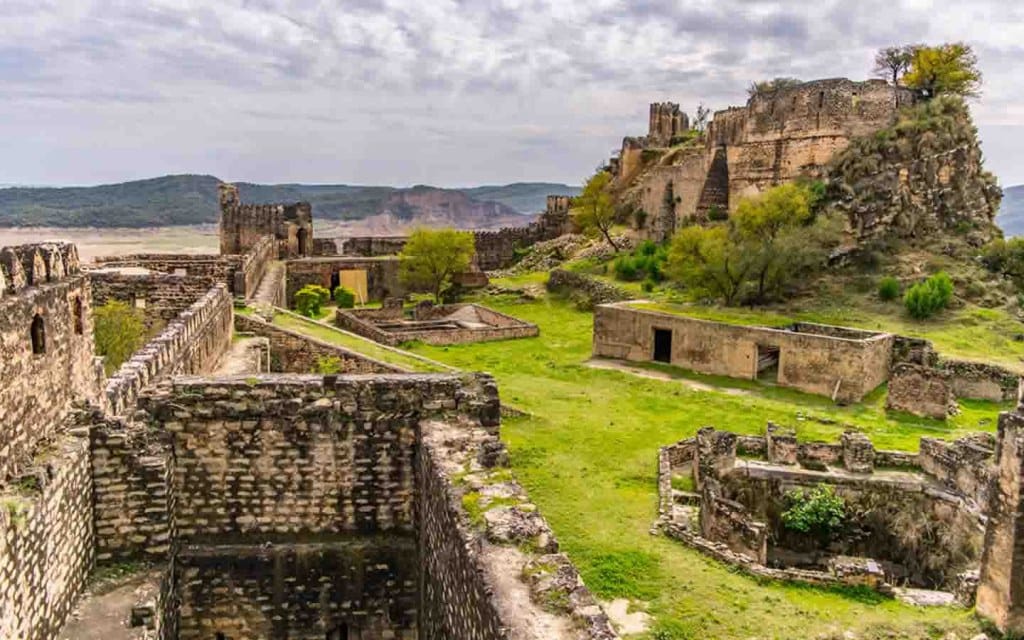
Perched atop a commanding high ground, the ancient temple fortress stands as a beacon of spiritual solace, its gates open to seekers of divinity. Embraced by the tranquil ambiance of Ayodhya, it emerges as a prominent jewel amidst a tapestry of temples and shrines. From the ethereal hours of summer's dawn, welcoming devotees from 6:30 am to 10:30 am, to the serene twilight of winter's eve, bidding farewell at 5:00 pm, its sacred precincts remain accessible to the faithful. Within these hallowed hours, the temple resonates with the fervor of devotion, drawing pilgrims to bask in the divine grace of Lord Ram.
As the sun casts its golden hues upon the ancient stones, the temple comes alive with the timeless echoes of rituals and prayers. It is during the auspicious Ram Navami festival, celebrated with grandeur in the month of Chaitra, that the temple truly shines in all its glory. Marching to the beat of sacred drums and the melodies of hymns, pilgrims from far and wide converge upon this sacred ground, offering obeisance to Lord Ram. Amidst the throngs of devotees, a symphony of faith and devotion reverberates, weaving a tapestry of spiritual fervor that transcends earthly bounds.
Shri Nageshwarnath Temple

Enshrined in the sacred soil of Ayodhya, Lord Nageshwarnathji reigns as the revered deity, his temple a testament to timeless devotion and divine grace. Legend whispers of Kush, son of Lord Ram, who adorned the land with a temple as splendid as the heavens, dedicated to Lord Nageshwarnathji. Within its ancient walls resides a shivalinga steeped in the mysteries of time, echoing tales of devotion and divine encounters.
According to folklore, the temple's genesis unfolds amidst the tranquil waters of the Saryu River, where Kush, immersed in ritual purity, encountered the grace of a nag kanya. In a serendipitous exchange, her return of his lost armlet sparked a bond of love, inspiring the construction of the temple in her honor.
Today, the temple stands as a bastion of faith, drawing pilgrims from every corner of the land, especially during the revered festival of Mahashivaratri. Amidst the jubilant throngs, devotees gather to pay homage to Lord Nageshwarnathji, seeking blessings and solace in the divine embrace.
Though the sands of time have shifted and civilizations risen and fallen, the temple's present edifice, a testament to architectural splendor, bears witness to its enduring legacy. Constructed in the year 1750 AD, it stands as a timeless monument to devotion, beckoning seekers of truth and solace to its sacred precincts.
Kanak Bhawan
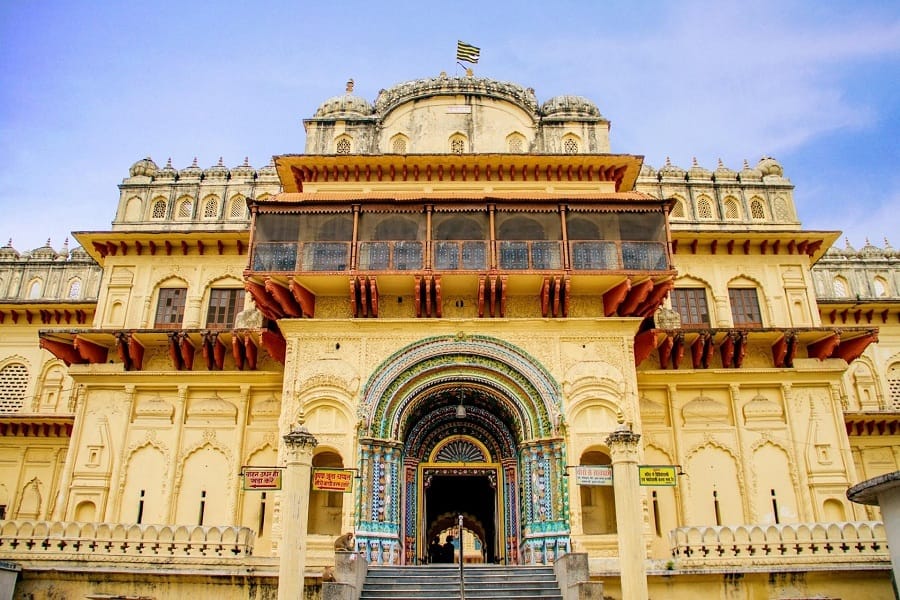
In the annals of history, amidst the verdant landscapes of Teekamgarh in Madhya Pradesh, the illustrious Queen Vrishbhanu Kuvari etched her legacy with the construction of an opulent temple in the year 1891. Adorned with exquisite embellishments, this temple stands as a testament to her patronage of art and devotion.
At its heart lies the main temple, its grandeur matched only by the sanctity within. Within the hallowed confines of its open inner area, the sacred shrine of Rampada awaits, a beacon of spiritual solace for pilgrims from far and wide.
Step into its sanctum, and be mesmerized by the divine presence encapsulated in the beautiful idols of Goddess Sita alongside Lord Ram and his revered brothers. Each idol, a masterpiece of artistry, evokes reverence and awe, inviting devotees to partake in the timeless tales of love, sacrifice, and devotion.
As the sun sets over the tranquil landscapes of Teekamgarh, the temple stands as a timeless monument to faith and devotion, a testament to the enduring legacy of Queen Vrishbhanu Kuvari and her unwavering devotion to the divine.
Tulsi Smarak Bhawan
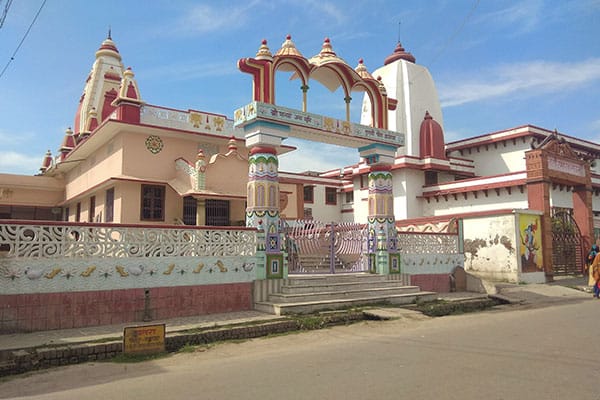
Nestled amidst the sacred precincts of Ayodhya, TulsiSmarakBhawan stands as a radiant tribute to the immortal legacy of the great saint-poet, Goswami Tulsidas Ji. Dedicated to preserving his timeless teachings and spiritual insights, this hallowed abode hosts a myriad of activities aimed at fostering devotion and enlightenment.
Within its serene confines, devotees gather for regular prayer meetings, devotional concerts, and enlightening religious discourses, each event a celebration of Tulsidas Ji's profound wisdom and enduring influence.
Venture deeper into the complex, and you'll discover the Ayodhya Shodh Sansthan, a treasure trove of literary compositions and scholarly works dedicated to unraveling the depths of Tulsidas Ji's divine poetry.
As twilight descends upon Ayodhya, the Tulsi Smarak Auditorium comes alive with the timeless spectacle of Ramleela, a captivating portrayal of Lord Ram's divine saga. From 6:00 pm to 9:00 pm every day, the auditorium resonates with the melodious chants and vibrant enactments, drawing pilgrims and enthusiasts alike to witness this cherished tradition unfold.
Amidst the enchanting ambiance of TulsiSmarakBhawan, devotees find solace in the timeless wisdom of Goswami Tulsidas Ji, and the resonant echoes of devotion continue to illuminate the path to spiritual enlightenment.
Treta-ke-Thakur
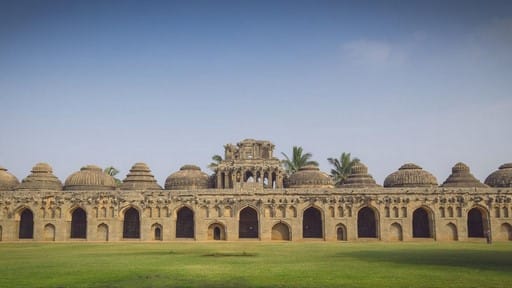
Known affectionately as Kaleram-ka-Mandir, this enchanting temple holds within its sacred confines the echoes of a legendary past. Legend has it that this hallowed ground is where the revered Lord Ram conducted the illustrious AshwamedhYagna, marking it as a site of profound spiritual significance.
The present structure of this temple, a testament to architectural splendor, was erected nearly three centuries ago by the benevolent Raja of Kullu, nestled amidst the picturesque landscapes of Himachal Pradesh. However, it was the revered Maharani Ahilyabai Holkar of Indore, known for her devout patronage of religious edifices, who bestowed her grace upon this temple through a magnificent renovation.
As one steps into the sanctum of Kaleram-ka-Mandir, the serene beauty of the statues, carved from black sandstone, captivates the soul. It is said that these timeless relics hail from the era of the legendary King Vikramaditya, their presence infusing the temple with an aura of antiquity and reverence.
Today, amidst the tranquil vistas of Himachal Pradesh, this temple stands as a timeless monument to faith and devotion, drawing pilgrims from far and wide to bask in the divine grace that permeates its hallowed precincts.


